Tree Lopping and Removal in Chislehurst: Ensuring Safety and Aesthetics for Your Property
Introduction to Tree Lopping and Removal
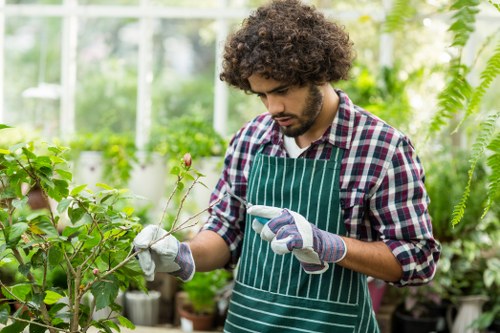
Tree lopping and removal are essential services for maintaining the safety and beauty of your property in Chislehurst. Whether you have overgrown trees that pose a risk or trees that detract from your landscape, professional tree services can help.
Understanding when and why to engage in tree lopping or removal is crucial for homeowners. Proper tree maintenance not only enhances the visual appeal of your home but also ensures the well-being of your family and neighbors.
In this article, we will explore the various aspects of tree lopping and removal, the benefits of hiring professionals, and how to choose the right service provider in Chislehurst.
The Importance of Tree Lopping
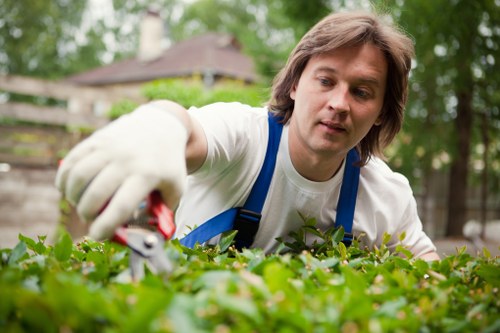
Tree lopping involves the selective cutting of tree branches to manage their growth and maintain their health. It is a necessary practice for several reasons:
- Safety: Overgrown branches can become hazardous during storms or high winds.
- Health: Removing dead or diseased branches helps prevent the spread of pests and illnesses.
- Light and Air: Lopping trees can improve sunlight penetration and air circulation around your property.
- Aesthetic Appeal: Well-maintained trees enhance the overall look of your garden and home.
Regular tree lopping ensures that your trees remain robust and beautiful, contributing positively to your property’s environment.
Moreover, proper tree maintenance can increase the lifespan of your trees, saving you from costly replacements in the long run.
When to Consider Tree Removal
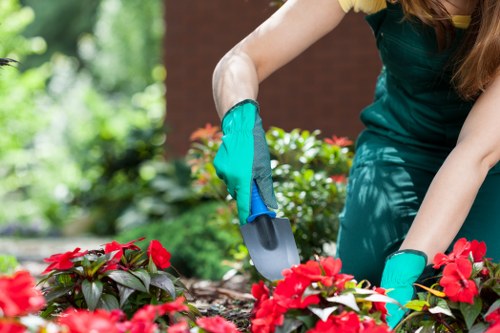
While tree lopping is beneficial, there are situations where tree removal becomes necessary. Some common reasons for removing a tree include:
- Structural Damage: Trees that have sustained significant damage may pose a safety risk and need to be removed.
- Root Issues: Extensive root systems can interfere with foundations, sidewalks, and underground utilities.
- Disease and Infestation: Trees severely affected by diseases or pests might not be salvageable.
- Overcrowding: Excessive tree density can lead to competition for resources, affecting the health of surrounding trees.
- Development Projects: Clearing land for construction or other projects often requires tree removal.
Deciding to remove a tree should be done carefully, considering all possible alternatives and the potential impact on your property’s ecosystem.
Consulting with a professional arborist can help you make an informed decision regarding tree removal.
Hiring Professional Tree Services
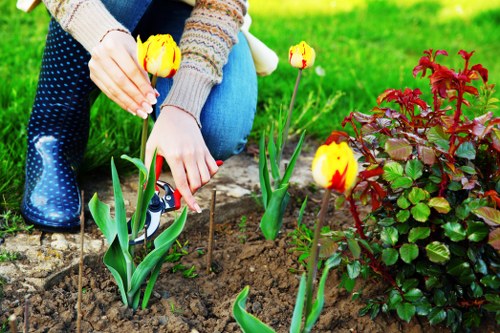
When it comes to tree lopping and removal, hiring experienced professionals is crucial. Here’s why professional services stand out:
- Expertise: Trained arborists understand tree biology and can make informed decisions about maintenance.
- Safety: Professionals have the necessary equipment and training to perform tasks safely.
- Efficiency: Experienced teams can complete jobs quickly and effectively, minimizing disruption.
- Insurance: Reputable companies carry insurance, protecting you from potential liabilities.
- Compliance: Professionals are aware of local regulations and can obtain necessary permits.
Choosing professional tree services ensures that the job is done correctly, preserving the health of your trees and the safety of your property.
Moreover, professionals can provide valuable advice on tree care and maintenance tailored to your specific needs.
Choosing the Right Tree Service in Chislehurst
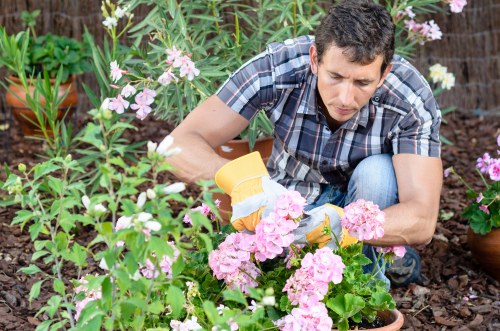
Selecting the right tree service provider in Chislehurst requires careful consideration. Here are some tips to guide your decision:
- Check Credentials: Ensure the company is licensed, insured, and certified by relevant arborist associations.
- Experience: Look for companies with a proven track record in tree lopping and removal.
- References: Ask for testimonials or references from previous clients to gauge their reliability.
- Pricing: Obtain detailed quotes and compare prices, but avoid choosing based solely on cost.
- Services Offered: Ensure the company provides the specific services you need, whether it’s lopping, removal, or both.
Investing time in researching and selecting the right provider can lead to better outcomes and greater satisfaction with the services rendered.
Additionally, a reputable company will offer a consultation to assess your needs and recommend the best course of action.
The Tree Removal Process
Understanding the tree removal process can help you prepare and ensure a smooth experience. Here’s what to expect:
- Initial Assessment: Professionals inspect the tree and surrounding area to plan the removal.
- Obtaining Permits: If required, the service provider will handle necessary permits.
- Preparation: The area is cleared of obstacles, and safety measures are put in place.
- Cutting and Removal: The tree is carefully cut down, and branches are removed systematically.
- Cleanup: Debris is cleared, and the site is restored to its original state.
Following these steps ensures that tree removal is conducted efficiently and safely, minimizing any potential damage to your property.
Proper execution of each phase is essential to prevent accidents and ensure the health of remaining trees.
Environmental Considerations
Tree lopping and removal have environmental implications that should be carefully considered. Sustainable practices include:
- Selective Lopping: Removing only necessary branches to preserve the tree’s health and structure.
- Recycling Wood: Utilizing removed wood for mulch, firewood, or other purposes reduces waste.
- Preserving Biodiversity: Maintaining a variety of tree species supports local ecosystems.
- Minimal Impact Techniques: Using methods that minimize disturbance to the surrounding environment.
By adopting environmentally friendly practices, tree services contribute to the sustainability and ecological balance of Chislehurst.
Moreover, responsible tree management promotes long-term environmental health and resilience against climate challenges.
Costs Involved in Tree Lopping and Removal
The cost of tree lopping and removal in Chislehurst can vary based on several factors:
- Tree Size: Larger trees require more labor and resources, increasing costs.
- Location: Trees in difficult-to-reach areas may incur additional charges.
- Health of the Tree: Diseased or damaged trees might need specialized treatment.
- Accessibility: Easy access to the tree can reduce overall costs.
- Service Scope: Comprehensive services like cleanup and disposal affect the final price.
Obtaining a detailed quote from a professional service provider helps you understand the expected expenses and plan accordingly.
Additionally, some companies offer free consultations and estimates, allowing you to compare options before making a decision.
Benefits of Regular Tree Maintenance
Engaging in regular tree maintenance offers numerous advantages:
- Enhanced Safety: Prevents the risk of falling branches and accidents.
- Improved Health: Promotes the growth and vitality of your trees.
- Property Value: Well-maintained trees can increase the value of your property.
- Energy Efficiency: Strategic pruning can reduce energy costs by providing shade and windbreaks.
- Pest Control: Regular maintenance helps manage and prevent pest infestations.
Consistent care ensures that your trees remain a valuable asset, contributing positively to your living environment.
In addition, healthy trees can improve air quality and provide natural cooling, benefiting your overall health.
Safety Precautions During Tree Lopping and Removal
Tree lopping and removal involve inherent risks. Adhering to safety precautions is crucial:
- Use of Proper Equipment: Ensures tasks are performed safely and efficiently.
- Trained Personnel: Professionals are trained to handle various scenarios and emergencies.
- Safety Gear: Protective clothing and gear minimize the risk of injuries.
- Clear Communication: Ensures all team members understand their roles and responsibilities.
- Emergency Plans: Having protocols in place for unexpected events enhances safety.
Implementing these measures protects both the workers and the property, ensuring a smooth operation.
Moreover, strict safety standards reduce the likelihood of accidents and property damage during the process.
Environmental Regulations in Chislehurst
Operating within environmental regulations is essential for tree services in Chislehurst. Compliance involves:
- Permitting: Securing necessary permits for tree removal, especially for protected species.
- Protected Trees: Identifying and conserving trees that are protected by local laws.
- Waste Disposal: Properly disposing of or repurposing tree debris in accordance with regulations.
- Conservation Practices: Implementing methods that support environmental sustainability.
- Reporting: Providing documentation as required by local authorities.
Adhering to these regulations ensures that tree services are conducted responsibly, safeguarding the natural heritage of Chislehurst.
Non-compliance can result in legal consequences and damage to the environment, highlighting the importance of following local guidelines.
Eco-Friendly Tree Removal Practices
Embracing eco-friendly practices in tree removal benefits both the environment and your community. Key practices include:
- Mulching: Turning removed branches into mulch enriches the soil.
- Composting: Organic waste from trees can be composted to create nutrient-rich soil.
- Recycling Wood: Using wood for firewood or construction reduces waste.
- Preserving Wildlife: Minimizing disruption to local wildlife habitats during removal.
- Sustainable Techniques: Utilizing methods that promote environmental health and sustainability.
These practices ensure that tree removal does not negatively impact the ecosystem, maintaining the balance of nature in Chislehurst.
Furthermore, eco-friendly approaches contribute to the community’s sustainability efforts, fostering a greener environment for future generations.
Tree Lopping vs. Tree Removal: Understanding the Difference
It's important to distinguish between tree lopping and tree removal, as they serve different purposes:
- Tree Lopping: Focuses on trimming and shaping the tree to promote healthy growth and aesthetics.
- Tree Removal: Involves completely cutting down and removing the tree from its location.
While lopping is a maintenance activity, removal is typically a more drastic measure taken when the tree poses a risk or is beyond saving.
Understanding the distinctions helps in making informed decisions about the care and management of your trees.
Benefits of Tree Preservation
Preserving trees is beneficial for numerous reasons:
- Environmental Health: Trees improve air quality and support biodiversity.
- Climate Regulation: They help in regulating temperatures and reducing carbon footprints.
- Community Well-Being: Green spaces enhance the aesthetics and livability of neighborhoods.
- Economic Value: Mature trees can increase property values and attract potential buyers.
- Social Benefits: Trees provide shade and spaces for recreation, promoting a healthy lifestyle.
Prioritizing tree preservation ensures that these benefits continue to support the community and the environment.
Moreover, preserved trees contribute to the cultural and historical identity of the area, adding character to Chislehurst.
Maintaining Tree Health
Maintaining the health of your trees involves regular care and attention. Key practices include:
- Pruning: Regularly trimming branches to remove dead or diseased parts.
- Watering: Ensuring trees receive adequate water, especially during dry periods.
- Fertilizing: Providing essential nutrients to support growth.
- Pest Management: Monitoring for and treating pest infestations promptly.
- Soil Care: Maintaining healthy soil conditions to support tree roots.
Proactive maintenance helps prevent issues before they become serious, keeping your trees strong and vibrant.
Additionally, healthy trees are better equipped to withstand environmental stresses and contribute positively to your property’s ecosystem.
Impact of Tree Removal on Property
Tree removal can have significant impacts on your property, both positive and negative:
- Positive Impacts: Increases safety, opens up space, and can enhance property aesthetics.
- Negative Impacts: Potential loss of shade, increased energy costs, and loss of natural habitats.
Weighing these impacts helps you make informed decisions that align with your property goals and environmental considerations.
Compensating for any negative effects, such as planting new trees, can help maintain the balance and benefits provided by a thriving tree canopy.
Tree Lopping Techniques
Various techniques are employed in tree lopping to ensure effective and safe maintenance:
- Cabinet Cutting: Removing branches at the base to promote natural growth.
- Top Cutting: Shaping the canopy by trimming the top of the tree.
- Thinning: Removing selected branches to reduce density and improve airflow.
- Heading: Cutting back branches to encourage branching and fuller growth.
- Pollarding: Regularly cutting back branches to control growth and height.
Each technique serves a specific purpose and is chosen based on the tree’s condition and desired outcome.
Professional arborists select the appropriate method to enhance the tree’s health and maintain its structural integrity.
Aftercare Following Tree Removal
Proper aftercare is essential following tree removal to ensure the health and safety of your property:
- Stump Removal: Grinding or removing the stump prevents regrowth and enhances aesthetics.
- Soil Treatment: Addressing any soil issues that may have arisen from the removal process.
- Plant Replacement: Planting new trees or shrubs to maintain green spaces.
- Site Restoration: Cleaning up debris and restoring the landscape to its original state.
- Health Monitoring: Observing surrounding trees for any stress or disease resulting from the removal.
These steps help maintain the overall harmony and health of your property after a tree has been removed.
Additionally, aftercare ensures that the removal process does not negatively impact the remaining landscape or structures.
Legal Considerations for Tree Removal
Tree removal may involve various legal considerations, particularly in Chislehurst:
- Local Ordinances: Understanding and complying with local tree removal laws and regulations.
- Property Boundaries: Ensuring that removal does not encroach on neighboring properties.
- Protected Species: Identifying and preserving any trees that are legally protected.
- Permitting: Obtaining the necessary permits before initiating removal.
- Dispute Resolution: Addressing any conflicts with neighbors or authorities regarding tree removal.
Being aware of these legal aspects prevents potential disputes and ensures that tree removal is conducted lawfully.
Consulting with local authorities or legal advisors can provide clarity on the specific requirements for your situation.
Seasonal Considerations for Tree Lopping and Removal
Timing is crucial in tree lopping and removal. Different seasons offer various advantages:
- Spring: Ideal for promoting new growth and assessing tree health after winter.
- Summer: Best for growth-related pruning, but care must be taken to avoid heat stress.
- Autumn: Good for preparation for winter, such as removing weak branches.
- Winter: Useful for removal when trees are dormant, reducing stress and risk.
Choosing the right season ensures that tree maintenance activities are performed effectively and with minimal impact on the trees.
Additionally, seasonal practices align with the natural life cycle of trees, supporting their health and growth.
Understanding Tree Health Signs
Recognizing signs of poor tree health can prompt timely maintenance:
- Leaf Discoloration: Yellowing or browning leaves may indicate disease or nutrient deficiency.
- Dead Branches: Branches lacking leaves or showing signs of decay need removal.
- Cracks and Splits: Structural damage can compromise the tree’s stability.
- Excessive Leaf Drop: Sudden or significant leaf loss may signal stress.
- Pest Infestations: Visible pests or damage from insects require immediate attention.
Early detection of these signs allows for interventions that can save the tree and prevent further issues.
Regular inspections by professionals can help in identifying and addressing health problems promptly.
The Role of Arborists in Tree Maintenance
Arborists play a vital role in tree maintenance and management:
- Assessment: Evaluating tree health and identifying maintenance needs.
- Pruning: Performing precise cuts to optimize growth and aesthetics.
- Removal: Safely removing trees that pose risks or are beyond saving.
- Consultation: Providing expert advice on tree care and management.
- Emergency Services: Responding to storm damage or urgent tree-related issues.
Engaging a certified arborist ensures that your trees receive the highest standard of care.
Additionally, arborists contribute to the sustainability and longevity of the trees on your property.
Case Study: Successful Tree Removal in Chislehurst
Consider the case of a Chislehurst homeowner with a large, diseased oak tree near their house. The tree posed a significant safety risk and negatively impacted the property’s aesthetics.
The homeowner contacted a professional tree service team, who conducted a thorough assessment. They obtained the necessary permits and planned a meticulous removal process, ensuring minimal disruption.
After the successful removal, the team provided cleanup services, leaving the property spotless. The homeowner was impressed with the efficiency and professionalism, leading to increased property value and peace of mind.
Frequently Asked Questions (FAQs)
- How often should trees be lopped?
Regular pruning is recommended annually or biannually, depending on the tree species and growth rate.
- Is tree removal always necessary if a tree is diseased?
Not always. It depends on the severity of the disease and the tree’s overall health. Consultation with an arborist is essential.
- Can I lop a tree myself?
Tree lopping can be dangerous and requires proper knowledge and equipment. It’s best to hire professionals for safety and effectiveness.
- What permits are required for tree removal in Chislehurst?
Permit requirements vary based on tree size, species, and location. It’s advisable to check with local authorities or hire professionals who can manage the permitting process.
- How does tree removal affect the environment?
Responsible tree removal, coupled with eco-friendly practices, minimizes environmental impact. Preserving biodiversity and recycling wood are crucial.
For more detailed answers, it’s recommended to consult with a local arborist or tree service provider.
Conclusion
Tree lopping and removal are critical services for maintaining the safety, health, and beauty of your property in Chislehurst. By understanding the importance of these services and choosing the right professionals, you can ensure your trees contribute positively to your living environment.
Regular maintenance, responsible practices, and compliance with local regulations are key to sustainable tree management. Whether you need routine lopping or complete removal, seeking expert assistance will provide peace of mind and a thriving landscape.
Contact us today to schedule your tree maintenance service and enhance the beauty and safety of your property.